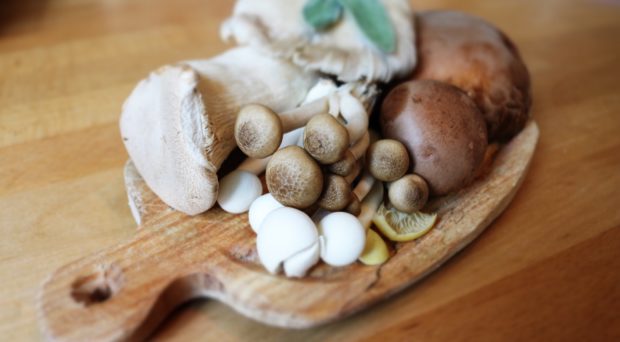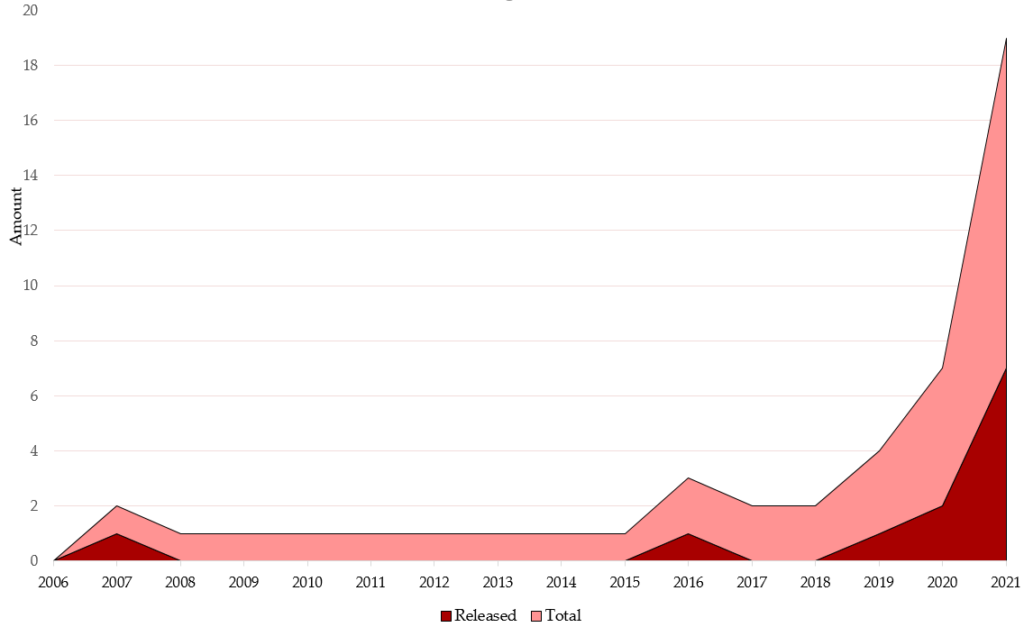
There are many reasons someone might stop eating meat. They might not like the taste. They might be concerned about how the animals are treated. Or they might want to reduce their carbon footprint, as meat production contributes to global warming:
- Meat production is substantially coupled with crop production. According to a study agricultural crops cover about 12 – 14% of the ice-free surface of the world. This requires irrigation with vast amounts of water and fertilization with inorganic nitrogen sources.
- Meat production increases global warming. It’s estimated that cattle are the main contributors of agricultural greenhouse gas emissions worldwide and the warming potential of Methane is 28 times higher than of CO2.
Whatever the reason, public interest in alternatives to meat has surged. However, many of these products are plant-based, which means that they still run into the crop production issue mentioned above.
Recently, a number of companies and start-ups have begin addressing this problem by introducing meat substitutes based on mushrooms or fungi, instead of plants.
Fungal meat, the newest thing? Not really!
In 2019, together with former colleagues at the Technical University of Berlin, I did some research on fungi-related patents, mainly in the material sector. This taught me to always look at the patent situation any time I was interested in new methods, procedures or products, because I made an observation: if something is described scientifically in research papers or being promoted through different channels, there will already be a patent from somebody out there who had the same idea and who secured their rights of use with it.
Therefore, I did another search to answer the following question:
Is mushroom-based meat a new phenomenon or has it been around for years?
I performed a keyword search at the Espacenet patent office and used the following keywords:
(ctxt = “mycelium” AND ctxt = “meat” AND (nftxt = “substitute” OR nftxt = “analog” OR nftxt = “analogue”)) NOT nftxt = “soybean”
The term ctxt refers to all the patents containing a keyword in the title, abstract or in the claims. The term nftxt searches for patents containing the keywords in all text fields. For instance, I wanted to get all the patents containing the keywords mycelium AND meat, especially if those are mentioned in the title or the abstract. I didn’t want to have any patents with the keyword “soybean” since meat substitutes made from that are plant based. Finally, I searched for patents over the last 15 years from 2006 to 2021 to dense the overall results more.
With this rough approach I was able to find 28 patents. After manually going through the list, I end up with 12 patents in total. The following table summarizes the cleared results. If you are interested to check the details, you can check out the keyword-search at Espacenet here. Feel free to play a bit around.
| Table 1: List of patents according tot he above described keyword search | ||||
| No | Title | Applicant | Release patent number | Release date |
| 1 | Methods for growing fungal mycelium and forming edible products therefrom | EMERGY INC [US] | WO2019237059A1 | 2019-12-12 |
| 2 | Method of producing mushroom mycelia based meat analog, meat analog produced thereby, low calorie synthetic meat, meat flavor and meat flavor enhancer comprising the meat analog | CJ CORP [KR] KIM YOUNG-DUK [KR] KIM YONG-HWI [KR] |
WO2007139321A1 | 2007-12-06 |
| 3 | Growth of filamentous fungi from pea protein residual waste streams | EMERGY INC [US] | US2021337827A1 | 2021-11-04 |
| 4 | Meat-substituting material using mycelium of eryngii | MITSUBISHI CORP LIFE SCIENCES LTD | JP2020014427A | 2020-01-30 |
| 5 | Methods for forming directional mycelium fibers | EMERGY INC [US] | WO2021163216A1 | 2021-08-19 |
| 6 | Food material using mushroom mycelium | MITSUBISHI CORPORATION LIFE SCIENCES LTD [JP] | TW202100029A | 2021-01-01 |
| 7 | 用于替代蛋白素肉制备的真菌菌丝体的制备方法及其在替代蛋白素肉制备中的应用 | CN113583882A | 2021-11-02 | |
| 8 | Methods for dehydrating and rehydrating mycelium | EMERGY INC [US] | WO2021163215A1 | 2021-08-19 |
| 9 | Methods of binding textured substrates using mycelium-producing fungi and food products formed therefrom | TERRAMINO INC [US] | WO2021030412A1 | 2021-02-18 |
| 10 | 사상균을 함유하는 식용 조성물 및 이의 배양을 위한 생물 반응기 시스템 | SUSTAINABLE BIOPRODUCTS INC [US] | KR20200044920A | 2020-04-29 |
| 11 | Methods of generating mycelial scaffolds and applications thereof | ECOVATIVE DESIGN LLC | CN113302284A | 2021-08-24 |
| 12 | Use of biomass from citric acid or gluconic acid production in food products | GADOT BIOCHEMICAL IND LTD [IL] | WO2016001912A1 | 2016-01-07 |
Now I would like to come back to my first introductory question regarding fungal-meat analogues:
Is mushroom-based meat a new phenomenon or has it been around for years?

Figure 1: Released and accumulated patents, according the keyword patent search over the last 15 years (Espacenet)
The oldest patent I found is from 2007 (Table 1, Position 2), a Korean patent with the title “Method of producing mushroom mycelia based meat analog, meat analog produced thereby, low calorie synthetic meat, meat flavor and meat flavor enhancer comprising the meat analog.” So the idea of a fungal-based meat substitute is about 15 years old.
However, most patents are found in 2020 and 2021 (Figure 1). This brings me to the conclusion that while the idea is not new, there has recently been some accelerated interest in the field. Also, it may be that my crude search parameters were too imprecise and there are probably more patents in the field. This is a common mistake to make when doing a patent search. More patents are likely to be filed in the coming years as issues like climate change and rampant land use for animals and humans do not level off. So mushrooms could play an important role!
Next time, we’ll take a closer look at the found patents and look behind the scenes of mushroom meat production.
- Connecting materials science with fungal biology: A personal insight - 15th June 2022
- Fungal pigments from the perspective of a scientist with passion for tattoos - 25th April 2022
- Fungal metabolites in pre- and postnatal human nutrition: How they may affect us and what to do about it - 25th March 2022
Comments